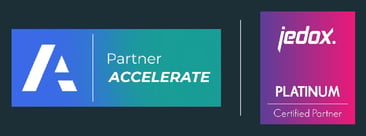In today’s rapidly evolving business and technology landscape, the integration of advanced technologies is transforming how organisations manage their financial operations. The concepts of Hyperautomation and Autonomous Finance are at the forefront of this revolution, driving significant advancements in Enterprise Performance Management (EPM).
At Profit & we have been at the forefront of the evolution of EPM technology and practical application of this for our clients for many years. From the early point solutions such as cost allocation tools, to the advancement of flexible digital platforms such as Anaplan and Jedox that deliver integrated planning. The next frontier we, alongside our tech partners, and clients, are pioneering is the practical application of Artificial Intelligence, Machine Learning and Robotic Process Automation, to propel the impact of EPM to unprecedented heights.
In this article I’ll explain what these cutting-edge technologies are, and how they are propelling EPM to new heights by further enhancing speed of analytics, process efficiency, data accuracy, and strategic decision-making.
What is HyperAutomation?
Hyperautomation refers to the use of a combination of advanced technologies such as Artificial Intelligence (AI), Machine Learning (ML), Robotic Process Automation (RPA), and intelligent business management software to automate complex business processes. Unlike traditional automation, which focuses on automating discrete tasks, hyperautomation aims to automate entire workflows and processes, creating highly efficient and adaptive systems. Key components include:
- Integration of automation tools to handle intricate processes.
- Big data analytics derives insights and drives automation.
- AI and ML enable systems to learn from data and continuously improve.
- End-to-end process automation of entire workflows, not just isolated tasks.
What is Autonomous Finance?
Autonomous finance leverages AI, ML, and RPA to automate financial processes and decision-making. Minimising manual intervention improves efficiency, accuracy, and speed of financial operations, allowing your business to focus more on strategic activities rather than routine tasks. Key components of Autonomous Finance are:
- AI and ML driven predictive analytics to forecast financial trends and outcomes.
- AI-driven decision-making algorithms support real-time decisions based on data.
- Robotic process automation handles repetitive tasks like data entry and reconciliation.
- Automated systems ensure continuous compliance with regulations.
EPM Software: The Backbone of HyperAutomation and Autonomous Finance
EPM software is crucial in supporting the shift towards hyperautomation and autonomous finance. By leveraging the latest digital planning technologies, EPM has long provided a robust platform for financial planning, analysis, and reporting. With EPM in place organisations are in an excellent position to take the next steps to automation by leveraging these advanced technologies, particularly given that digital platform providers are extending offerings to include built-in AI and ML capabilities that will elevate financial management further. Here’s how:
- Data integration and real-time reporting.
- EPM platforms integrate data from multiple sources, providing a unified view of financial performance.
- This integration supports autonomous decision-making by ensuring all relevant data is available for analysis and real-time reporting, that enable quicker and more informed decisions, essential for autonomous finance.
- Advanced analytics and predictive modeling
EPM platforms now include AI and ML to perform predictive analytics and what-if scenarios, helping organisations forecast financial outcomes and identify trends. These capabilities enable proactive decision-making, aligning with the principles of hyperautomation.
Process Automation and Efficiency
By automating complex workflows required for financial processes such as budgeting, forecasting, and reporting, EPM platforms reduce manual effort and increased accuracy. This is a core aspect of hyperautomation, delivering significant efficiency gains.
Enhanced Collaboration and Planning
Collaboration between business functions is a core purpose for digital planning platforms, as the platform approach ensures that all stakeholders have access to a single source of up-to-date data. This interconnectedness is vital for iterative planning processes. This is seen in the SUSE case, where finance and sales must exchange plans multiple times, facilitated by the Anaplan digital planning platform.
Compliance and Governance
Providing a reliable framework for financial operations enhances governance capabilities. EPM software ensures compliance with financial regulations through automated checks and balances, eliminating the risk of human error.
Real-World Application
SUSE's Transformation with Anaplan
A practical example of these advancements is SUSE, a leading global independent open-source software provider. Facing the challenges of high growth and constant change, SUSE adopted Anaplan’s digital EPM platform to streamline its financial and sales planning processes. The implementation resulted in:
- Improved Planning Speed and Accuracy: Automating the planning process and integrating data from ERP and CRM systems.
- Enhanced Collaboration: Connecting finance and sales teams for better alignment and strategic planning.
- Real-Time Insights: Utilising real-time data feeds for accurate and timely forecasting.
Henkell Freixenet’s Integration of EPM Solutions
Henkell Freixenet, a global leader in the sparkling wine and spirits industry, also demonstrates the power of modern EPM solutions. By leveraging the Jedox digital EPM software Henkell Freixenet achieved:
- Streamlined Financial Processes: Automation of budgeting and forecasting reduced manual errors and enhanced efficiency.
- Data-Driven Decision Making: Leveraging AI and predictive analytics to inform strategic decisions.
- Improved Financial Visibility: Real-time reporting provided comprehensive insights into financial performance, supporting agile responses to market changes.
The drive towards hyperautomation and autonomous finance is reshaping the financial landscape, pushing EPM software to unprecedented levels of capability and efficiency. By integrating advanced technologies, you can automate complex processes, enhance decision-making, and achieve greater agility that is essential for sustained profitable growth and competitive advantage.
If you’re interested in how the advancement of AI/ML and RPA can enhance your EPM application, or indeed how you can leverage EPM to drive new levels of business performance, I’ll be delighted to hear your thoughts, so feel free to comment below, or get in touch with me directly.
For more detailed insights, you can refer to sources like Gartner on hyperautomation and autonomous finance, or explore this detailed paper from Jedox: Finance’s Emerging Superpowers.







